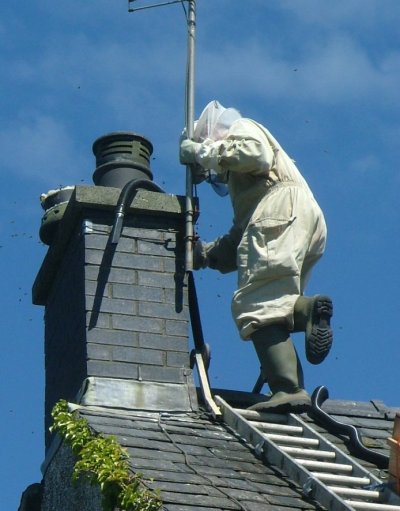
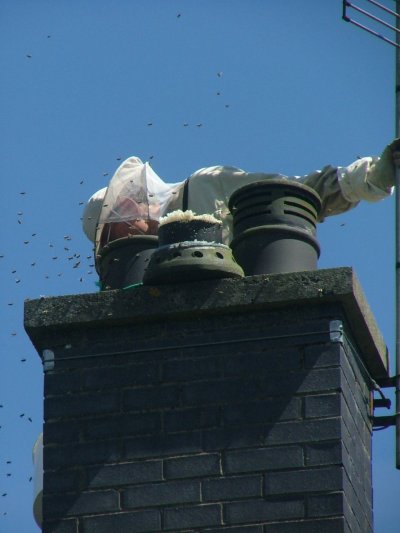
Extreme beekeeping
All photos by Allison Wheeler.
Honey bee colonies from swarms that settle in disused chimneys seem to do extraordinarily well. Their 'hive' usually comprises a 9-inch diameter clay pot capped with an 'elephant's foot' cap. The first combs are often started under the bottom rim of the cap, as in this example, although sometimes they start either in the cap itself -- a draughty situation because of the many vent holes on the perimeter of the cap -- or underneath the slab, usually of concrete, on which the pot rests. At this point in the flue they usually have a 9-inch (225 mm) square cavity walled with at least 4 inches (100 mm) thickness of masonry and are often adjacent to an active flue, which could help keep the colony warm in winter.
As the base of the pot is usually wider than its top, this complicates the removal of the comb which often has to be squeezed into a curve to get the bottom part of it out of the flue. The risk of losing a comb during such removal is high as it is often quite soft and, under its own weight and the weight of bees, it tears itself free from the tools used to grip it.
Below left: elephant's foot cap removed; bee vacuum at the ready.
Below right: inspecting the top of the colony; note the comb attached to the bottom of the cap, here inverted on the capping slab.


Below left: bee vac comprising domestic vacuum, Warré hive box and trap; comb bucket.
Below right: vacuuming bees; this takes the bees alive with a surprisingly low casualty rate.
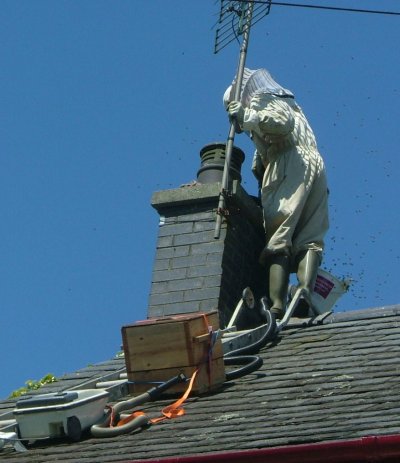

Below left: removing combs. Below right: a brood comb removed.
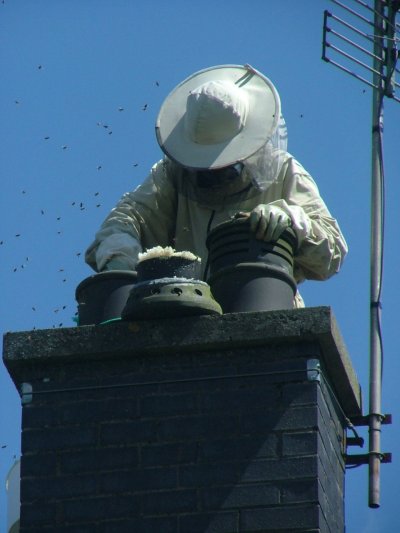
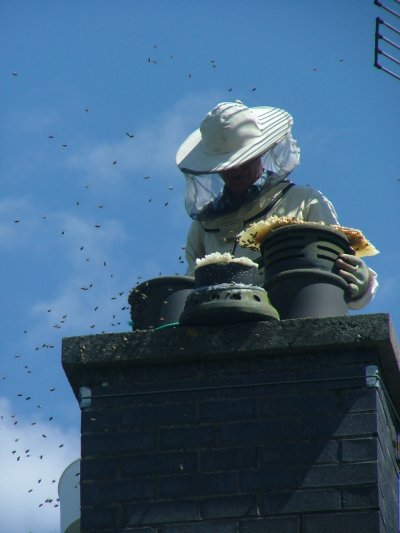
Below left: largest comb removed. Below right: vacuuming bees off the last comb to come out.
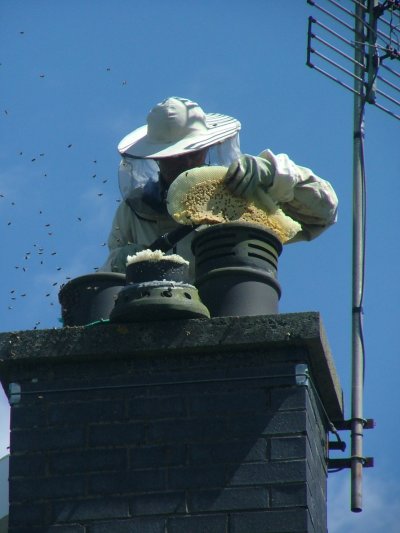
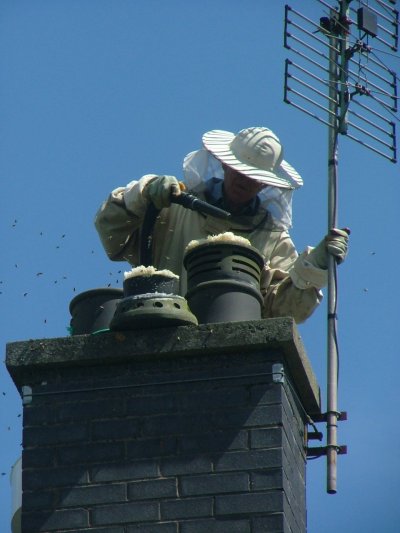
Below left: descending with the comb bucket. This colony removal was complicated by massive robbing in the closing stages. An apiary of 14 hives, probably the one that sent out the swarm that settled in this chimney, was only about 300 metres away. Bees arrived in their thousands to take the rich pickings of exposed honey. In a short time any spilt honey had gone.
Below right: comb bucket before closure, attracting a lot of bees.
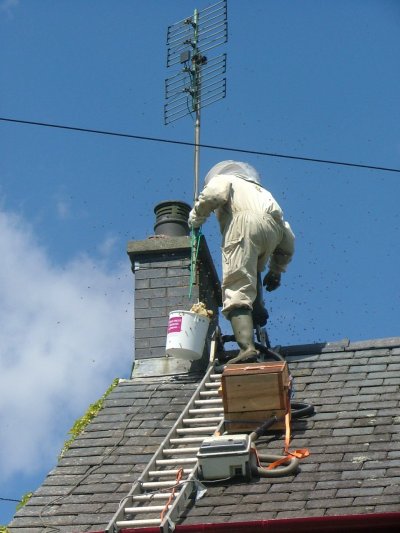
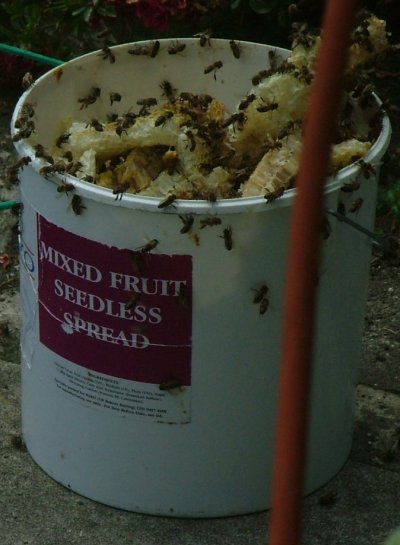
The comb was taken to an apiary and tied into frames which were put in a hive. The bees were reunited with their combs.
David Heaf's bee removals index